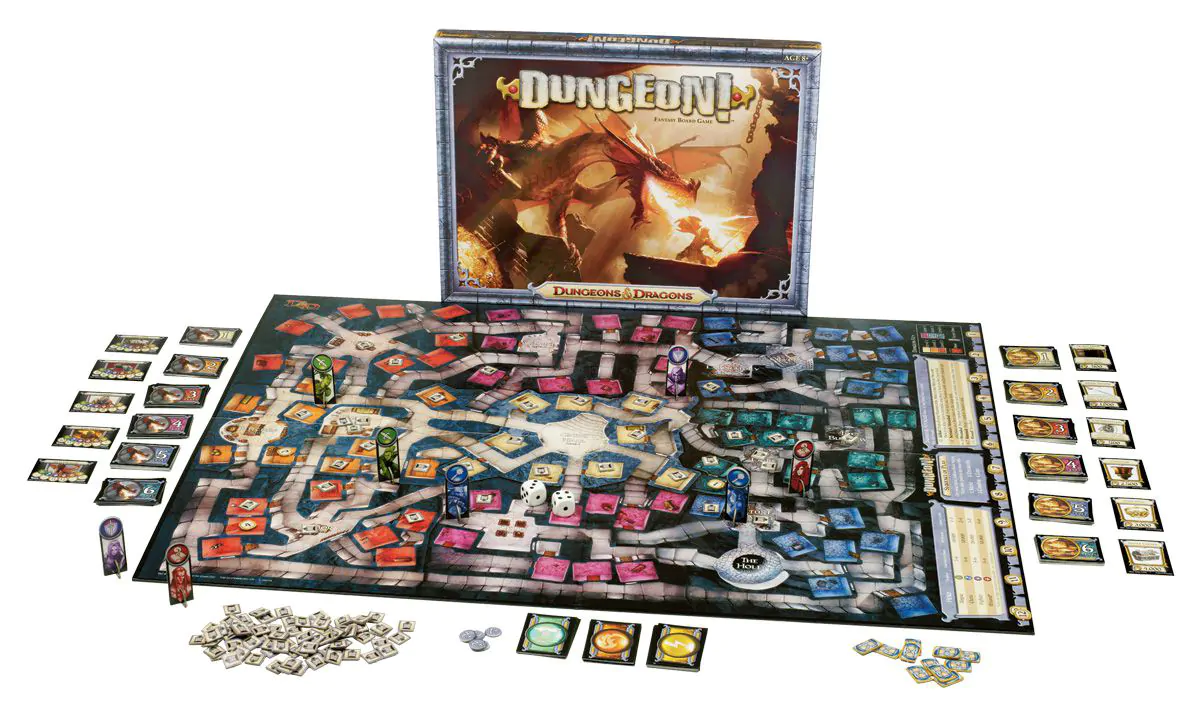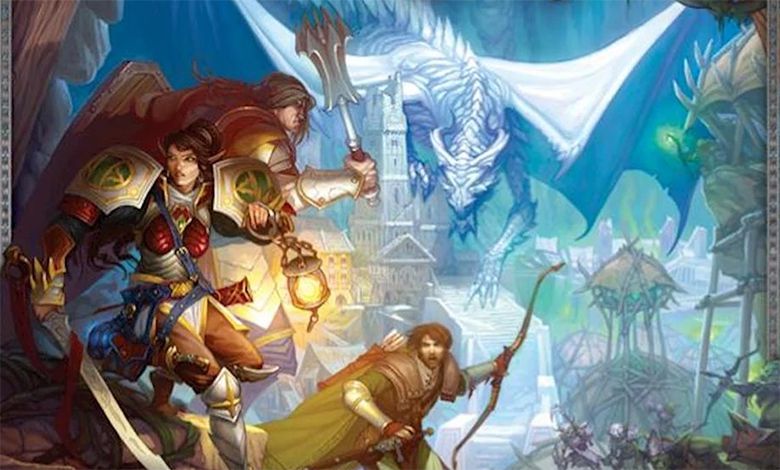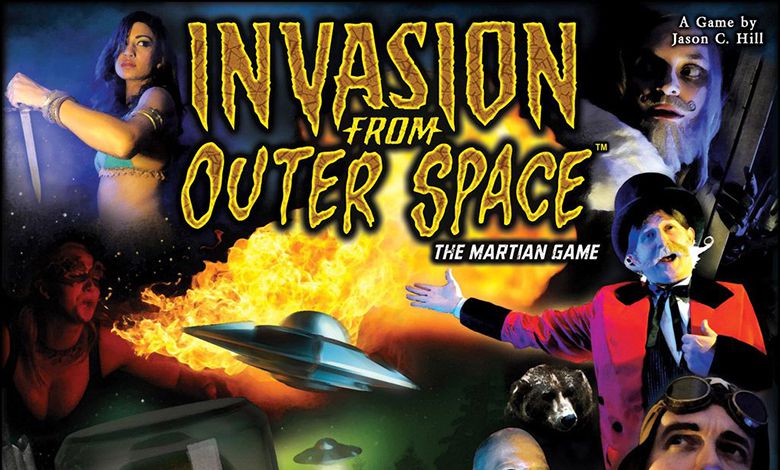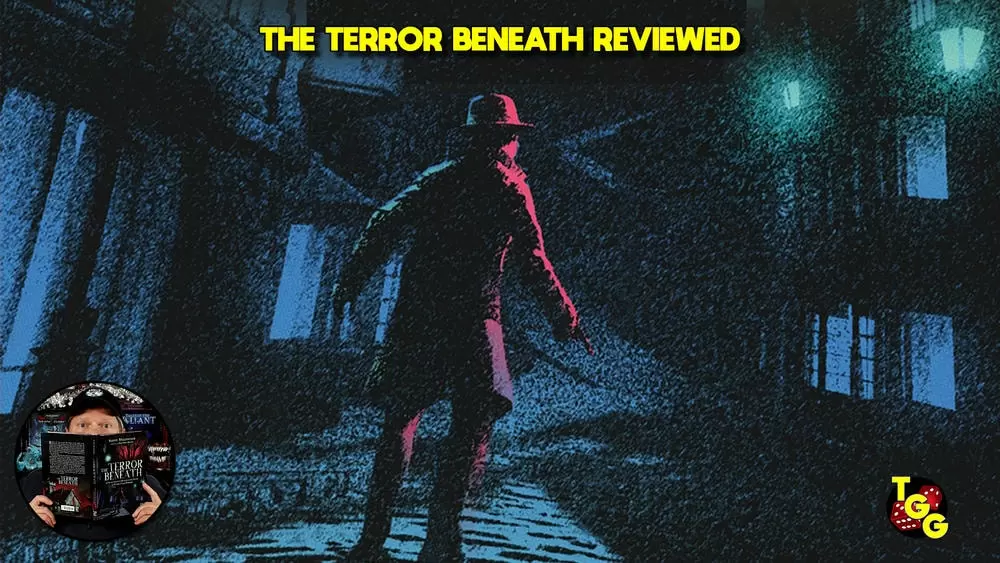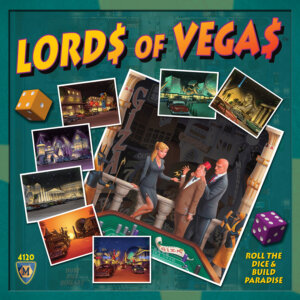
Publisher: Mayfair Games
Designers: James Ernes and Mike Selinker
Artists: Steve Fastner, Rich Larson, and Franz Vohwinkel
Year: 2010
Players: Two to four players
Ages: 12+
Playing Time: 60 Minutes
Retail Price: $45.00
Yes, I like to gamble. I hit the boat at least once a year, I’ll buy the occasional lottery ticket, and I’ve been to Vegas a few times. Nothing too extreme, but it is a lot of fun. When I finally got the opportunity to play Lords of Vegas, I doubted the ability of the designers to capture that feeling that you can only get when sitting down at a casino on the strip in Vegas. Boy was I wrong.
This is a game about developing strategies, taking risks, and making a wager or two when you really need it. It’s a game about building and taking over casinos on the strip in Las Vegas. Something that many have dreamed about, but few have accomplished. The game captures the high rolling, take a chance feel you can get only in Vegas, and even though there is a huge luck factor when playing this game, you don’t consider it any worse than the odds of pulling out a 10 when you are ahead in the count.
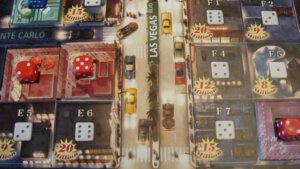
There are 48 dice included, 12 in each player color, and the way they are used in the game (aside from rolling) is to represent the power in each casino. If a player has the highest value die in a casino, they are the boss of that casino and will earn the victory points when their color comes up in the cards.
In addition to the dice, there are 45 square cardboard tiles in each of 5 colors. These represent the casinos that can be built. Each tile has a hole in the center where a die can be placed. Each empty lot on the board has starting die values on them, that also help determine how much an empty lot will cost you to build a casino on it.
Finally, the cards are the engine of the game. They determine who gets paid and when, plus when the “End Game” card is drawn, the game is over. This card is placed 3 quarters of the way down the deck at the beginning of the game. There are only 9 cards of each casino color. After a card is drawn, it is placed in its own specific discard pile by color. This is to enable the players to see the likelihood that a specific color card will be drawn. If 7 silver cards have been discarded, but only 5 purple cards have been discards, then it is more likely that the next card will be a purple one than a silver one and you can plan your strategy accordingly. See, already you are calculating the odds in this game, the split discard pile was an excellent idea.
Let me show you how it all works together. It is Yellow’s turn, so the yellow player draws a card from the deck. It is a purple card with the number “A2” written on it. Yellow takes one of their yellow marker chips and places it on the lot marked A2 on the game board. Yellow now owns this lot, and can build a casino on it whenever he wants on his turn.
The bank then looks at the board and pays $1 to every player for each marker they have on the board. So Red gets $3, Blue gets $2, and Yellow gets $3.
Next, the banker pays everyone who owns a purple casino on the board. Red is the only one who owns a purple casino. It has two tiles. The two red dice in those tiles add up to 7, a 3 on one tile and a 4 on the other tile. So red gets $7 from the bank. Finally, red also gets 2 victory points. One for each tile in their purple casino. Only the boss of a casino gets the victory points. The boss is the player with the highest value die in a casino.
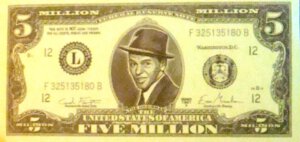
Now yellow can do their actions for the turn. Yellow decides to build a casino on the A2 space that their marker is on. The lot on the board says that it will cost yellow $6 to build a casino there. Red already has a Brown casino on both A1 and A5, which is next to Yellow’s A2 lot. These each have a red die in them showing a value of 3 pips. Yellow pays the $6 and placed a purple tile down in the A2 spot. The board says the initial die value of spot A2 is 2. So yellow puts a yellow die in that spot with 2 pips showing on top.
Yellow decides to reorganize their new purple casino. He pays $2 to the bank ($1 for each pip showing on his purple casino die) and gets to reroll the die in the A2 spot. Yellow rolls a 5 and puts that back into the A2 tile. Next Yellow will remodel his purple casino. He pays $5 ($5 for each tile in the casino, which is currently 1 tile) then replaces his purple tile with a brown one.
There are now 3 brown casino tiles together, 2 of them are red’s and 1 is yellow’s, but since yellow has a 5 showing and red only has 3’s, yellow is the boss of the casino and will earn the victory points the next time a brown card is drawn.
Finally, yellow decides to gamble at red’s purple casino. It has 2 tiles so Yellow can gamble up to $10, which he does. Red lays off half the bet to the bank, as she is getting nervous now. Yellow rolls 2 dice and gets a 4. Looking at the payoff card, a 4 means yellow wins! Red gives $5 to yellow and the bank gives yellow another $5.
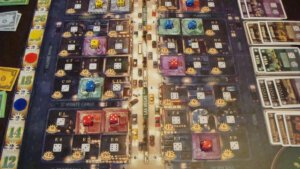
The rules are simple once you know them, despite the fact that they are difficult to describe. The most difficult part of this game is the math. Every time you draw a card you have to figure out who gets paid what in both points and money. This isn’t too bad, until you draw one of the 4 “Pay the Strip” cards, when every casino connected to the strip earns money and points. I was also afraid that I would run out of money in the bank while playing, as you really don’t get a lot of paper money. It has come close, but the bank has never actually run out of cash. There are other player actions available too, like trading with other players and Sprawling, which is taking over an un-owned lot next to your casino.
Whoever has the most victory points on the track when the “End Game” card is drawn is the winner. If there is a tie, the player with the most money wins.
I found this game is fun, exciting, and packed with Vegas theme. Although there is a lot of luck, there is a lot of strategy too, just like in Las Vegas (at least, I like to think so). The teenagers said it was ok, but the adults that I played with loved it, especially those that have been to Vegas. One more thing I’d like to mention, I introduced this game to one of my non-gaming friends. He picked up on the rules in just a few minutes, although it took longer before he started to see the different strategies available to him. He had a good time and asked to play again, which is a good sign. Maybe now I can introduce him to other games.
[rwp-review id=”0″]
- A Dungeon Delve for Kids?: A Review of Dungeon! - Oct 24, 2022
- Better, Stronger, Faster | Descent: Journeys in the Dark Second Edition Reviewed - Oct 23, 2022
- Your Planet is Doomed!: Invasion from Outer Space Reviewed - Oct 22, 2022



